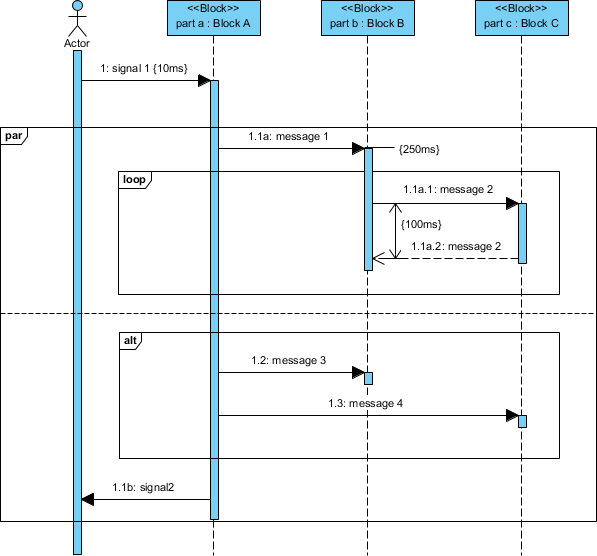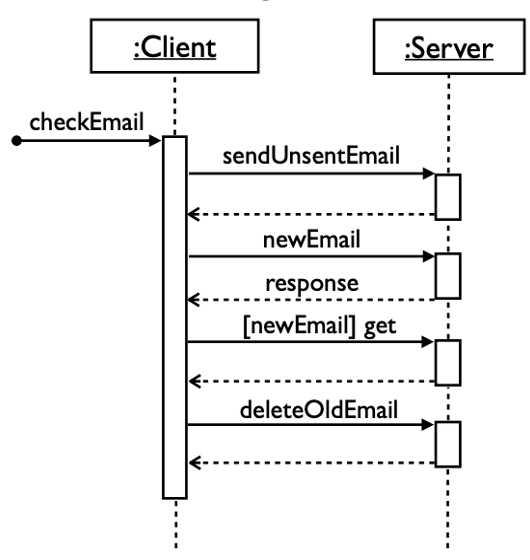

In other words, it can be said that the recursive message is a special case of the self message as it represents the recursive calls. Recursive Message: A self message sent for recursive purpose is called a recursive message.Self Message: It describes a communication, particularly between the lifelines of an interaction that represents a message of the same lifeline, has been invoked.Return Message: It defines a particular communication between the lifelines of interaction that represent the flow of information from the receiver of the corresponding caller message.Call Message: It defines a particular communication between the lifelines of an interaction, which represents that the target lifeline has invoked an operation.

The core of the sequence diagram is formed by messages and lifelines.įollowing are types of messages enlisted below: They are in the sequential order on the lifeline. The messages depict the interaction between the objects and are represented by arrows. It describes that time period in which an operation is performed by an element, such that the top and the bottom of the rectangle is associated with the initiation and the completion time, each respectively. It is represented by a thin rectangle on the lifeline. Several distinct roles can be played by an actor or vice versa. An actor may or may not represent a physical entity, but it purely depicts the role of an entity. It represents the role, which involves human users and external hardware or subjects. ActorĪ role played by an entity that interacts with the subject is called as an actor. It is positioned at the top of the diagram.

and they are typically used in conjunction with interaction diagrams (usually sequence diagrams).Ĭonsider you have $100,000 in a bank account. State machine diagrams are usually applied to objects but can be applied to any element that has behavior to other entities such as: actors, use cases, methods, subsystems systems and etc.

An object responds differently to the same event depending on what state it is in. State machine diagram typically are used to describe state-dependent behavior for an object.


 0 kommentar(er)
0 kommentar(er)
